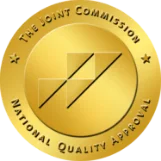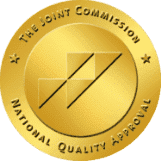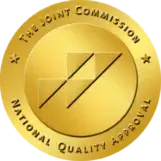An Overview of Meth Sores
Meth sores appear on the face, mouth, chest, or arms of individuals taking methamphetamine frequently. These open wounds appear differently in individuals, depending on their major cause. In most cases, they appear as acne breakouts, mosquito bites, or puss-filled sores.
Occasional use of methamphetamine is unlikely a cause of meth sores unless there is an increase in intake. The sores tend to get infected when individuals neglect personal hygiene. Individuals may also have formication due to frequent intake.
How is Meth Used?
Meth comes in different forms and has several methods of use. Individuals can use the substance by smoking, snorting, injecting, or swallowing it. In most cases, the use of crystal meth varies depending on the geographic region and several other factors.
Here are the different common ways individuals take the substance:
- Snorting: Most individuals who snort meth are typically new to abusing the substance. Snorting may result in damages to the sinus cavities. Continuous use of the drug may also result in a chronic runny nose.
- Injecting: When individuals inject the substance, it is typically the liquid powdered form. There are tendencies of blood-borne infections like hepatitis C, HIV, or hepatitis B when sharing needles for the substance.1
- Smoking: According to the National Institute on Drug Abuse, smoking is one of the most common methods of abusing meth. The type of substance smoked is typically the crystal or “ice” form.2
Signs of Meth Use
Individuals may experience physical and psychological symptoms of meth use. Note that these signs are typically severe. Here are the significant symptoms of meth use:
Meth Mouth
This sign is common among individuals experiencing meth use disorder. It describes the tooth decay and gum disease that occurs when an individual is addicted to the substance. When someone abuses crystal meth, it is typically the most apparent alongside changes in facial features.
Individuals experiencing meth mouth may develop other signs like a dry mouth (xerostomia). Lockjaw, bad breath, bruxism, and gum disease. In most cases, individuals develop the condition due to poor dental health, bad nutrition habits, and a lack of frequent dental maintenance.
Meth Sores
Development of sores signifies the presence of open wounds on certain regions of the body. In most cases, they appear around the face, mouth, or chest. Individuals experiencing meth abuse may observe signs such as developing facial acne, losing weight, or becoming frailer. A significant symptom also includes the droopy quality of facial skin.
Why are Meth Sores Formed?
Meth sores appear on certain areas of the body for a wide range of factors all due to methamphetamine abuse. Here's a detailed breakdown of why the sores form:
- Drug-triggered itching: One of the effects of regular intake of methamphetamine is itching. People typically begin to observe constant itching around different areas of the body. When itching becomes severe, it is imperative to consult a medical doctor for treatment.
- Hallucination-induced scratching: One may suffer from constant scratching of certain areas of the body due to formication from crystal meth sores. In most cases, these itchy feelings also include hallucination or formication. The individuals may also report the presence of imaginary meth mites or crank bugs in the body. Note that the hallucinations may also result in sleep deprivation.
- Limited blood flow that causes acne: Proper circulation of blood plays an essential role in the overall appearance of the skin. Due to limited blood flow after the intake of meth, individuals may experience significant signs of acne on the skin.
Meth Side Effects
Regular intake of this drug typically results in certain major meth side effects. The effects may be short-term or long-term with varying severities. Here are some of the significant meth side effects:
Short-Term Effects
The immediate or short-term effects of meth use include:3
- Decreased appetite
- Increased attention and less fatigue
- Feelings of euphoria
- Hyperthermia
- Increased respiration rate
- Improved activity and wakefulness
Long-Term Effects
Long-term effects of frequent meth intake include:4
- Increased distractibility
- Memory loss
- Changes in brain functioning and structure
- Aggression
- Increased respiration rate
- Weight loss
- Mood disturbances
Meth Psychosis
Meth psychosis is one of the long-term effects of constant use. Note that psychosis is a condition where individuals experience distorted thoughts and life perceptions. It typically involves paranoia, repetitive motor activity, and hallucination or formication. Some symptoms of psychosis due to the substance include:
- Agitation
- Talking very fast
- Having discussions that are difficult for other individuals to comprehend
- Unusual beliefs
- Itchy skin
Overdose
Overdose of crystal meth typically occurs due to the long-term buildup of the substance in the body. Symptoms of meth overdose require immediate medical attention. Some of the common meth overdose signs include trouble breathing, high or low blood pressure, loss of consciousness, and seizures.
Treatment of Meth Addiction
There are several possible treatment procedures for meth addiction. Mental health professionals consider several factors such as medical history before recommending a certain treatment path. Here are significant treatment options for addiction to the substance:
Detox
This process focuses on letting the body remove methamphetamine. It helps in managing the meth withdrawal symptoms of the substance and preventing relapse. Detoxification typically takes place in the presence of mental health experts for the best outcomes.
CBT (Cognitive-Behavioral Therapy)
With CBT, individuals can address certain problematic thoughts to overcome meth addiction. Apart from meth use disorder, CBT also helps treat anxiety, eating disorders, post-traumatic disorder (PTSD), and bipolar disorder.
Comprehensive Addiction Treatment
During comprehensive addiction treatment, the medical professionals typically identify the problems that may be contributing to meth addiction. Significant examples include childhood trauma and behavioral disorders.
12-Step Program
This program involves spiritual principles that non-religious individuals also find helpful. However, researchers find it difficult to discover the effectiveness of the program due to the lack of formal research and anonymity of the program.
Relapse Prevention Therapy
RPT is a type of cognitive-behavioral therapy that aims to prevent the possibility of relapses. It helps the individual anticipate circumstances likely to cause a relapse due to meth withdrawal and develop coping strategies in various situations.
Medication-Assisted Treatment
Medication-assisted treatment (MAT) involves the use of certain drugs to help reduce symptoms like formication or paranoia. It's typically combined with behavioral therapies to provide the best treatment outcome.5
- https://www.ncbi.nlm.nih.gov/pmc/articles/PMC4354220/
- https://www.drugabuse.gov/about-nida/organization/divisions/division-epidemiology-services-prevention-research-despr/community-epidemiology-work-group-cewg
- https://www.drugabuse.gov/publications/research-reports/methamphetamine/what-are-immediate-short-term-effects-methamphetamine-misuse
- https://www.drugabuse.gov/publications/research-reports/methamphetamine/what-are-long-term-effects-methamphetamine-misuse
- https://www.samhsa.gov/medication-assisted-treatment




















